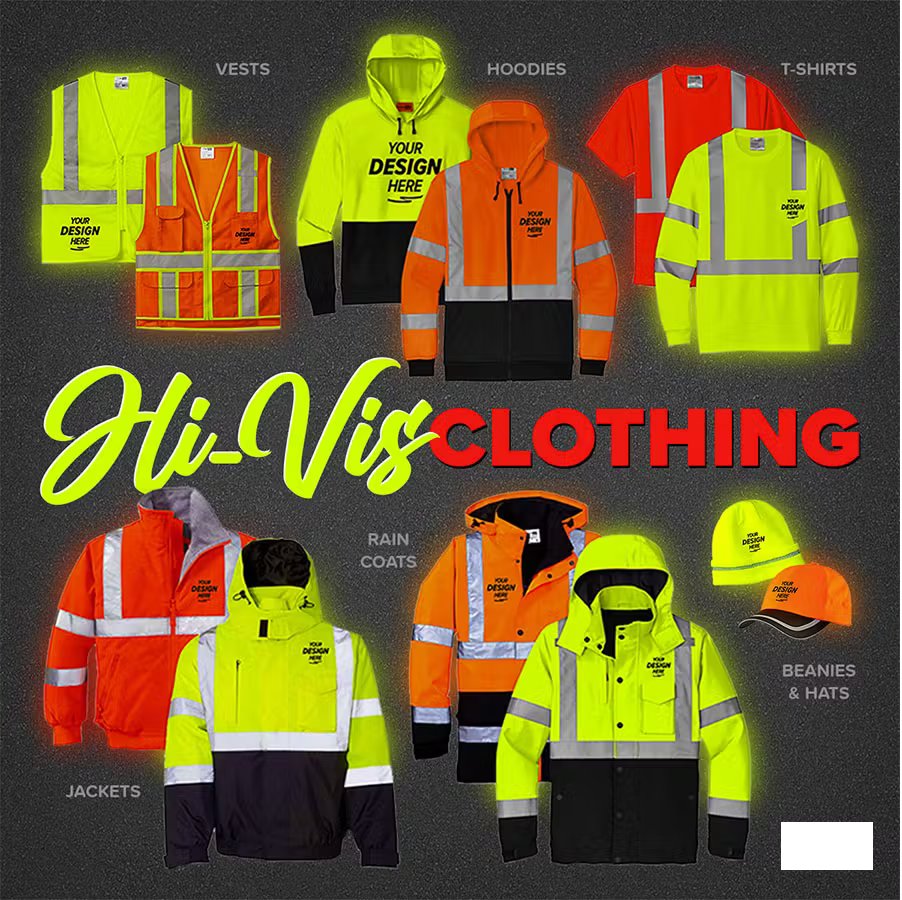
When Do Employees Need to Wear a Hi-Vis Jacket?
by Natalia Emilse Elbaba on Feb 12, 2024High-visibility (hi-vis) jackets aren't just a fashion statement (although, with the right branding, they can be!). They're a crucial piece of safety equipment in many industries, keeping workers visible and reducing the risk of accidents. But when exactly do employees need to wear a hi-vis jacket? Let's delve into the nitty-gritty to ensure your workplace prioritizes both style and safety.
Legally Bound to Be Bright:
Firstly, let's address the law. In many countries, including the US, UK, and Australia, specific regulations mandate hi-vis wear in certain situations. Similarly, the UK's Health and Safety Executive (HSE) requires its use in similar scenarios. Knowing your local regulations is crucial to avoid hefty fines and, more importantly, protect your employees.
Beyond the Law: Visibility for Every Industry:

But safety shouldn't stop at legal obligations. Hi-vis jackets offer invaluable protection in various industries, even when regulations aren't explicit. Here are some key scenarios:
- Construction and Roadwork: This is a no-brainer. With heavy machinery, moving vehicles, and uneven terrain, hi-vis is essential for making workers visible to colleagues, drivers, and pedestrians.
- Warehouses and Logistics: Forklifts, trucks, and bustling activity demand clear visibility. Hi-vis ensures workers stand out, preventing collisions and promoting safety.
- Emergency Services and Utilities: From firefighters and paramedics to roadside assistance crews, hi-vis helps them be easily identified in urgent situations, both for their own safety and for quick assistance to others.
- Transportation and Delivery: Whether navigating busy streets or maneuvering around loading docks, delivery drivers and dockworkers benefit from the enhanced visibility hi-vis provides.
- Landscaping and Outdoor Work: Especially in low-light conditions or near traffic, landscaping crews working along roads or in parks require hi-vis for better visibility.
The Power of Customization:
Not all hi-vis jackets are created equal. Consider these factors for optimal protection:
- Color and Reflectivity: Opt for colors like fluorescent orange or yellow, proven to enhance visibility in diverse lighting conditions. Choose jackets with high-quality reflective strips for maximum impact.
- Fit and Comfort: A loose-fitting jacket worn over regular clothes allows for easy movement and prevents snags. Breathable fabrics ensure comfort, especially in warm weather.
- Additional Features: Pockets for storing tools, ID badges, or communication devices can add functionality. Consider features like wind and water resistance for harsh environments.
Remember: Hi-vis jackets are just one part of a comprehensive safety strategy. Proper training, clear communication, and adherence to safety protocols are equally important.
Optimizing Your Hi-Vis Program:
- Conduct risk assessments: Identify areas where hi-vis is crucial and tailor requirements accordingly.
- Invest in high-quality jackets: Durable, certified hi-vis clothing provides better protection and lasts longer.
- Maintain your jackets: Regularly check for wear and tear, and replace damaged or faded jackets promptly.
- Educate and enforce: Train employees on the importance of hi-vis and the specific requirements in your workplace.
By understanding the "when" and "how" of hi-vis jackets, you can create a safer, more visible work environment for your employees. Remember, it's not just about complying with regulations – it's about prioritizing the well-being of your team. So, light up your workplace with hi-vis and watch your safety shine!


